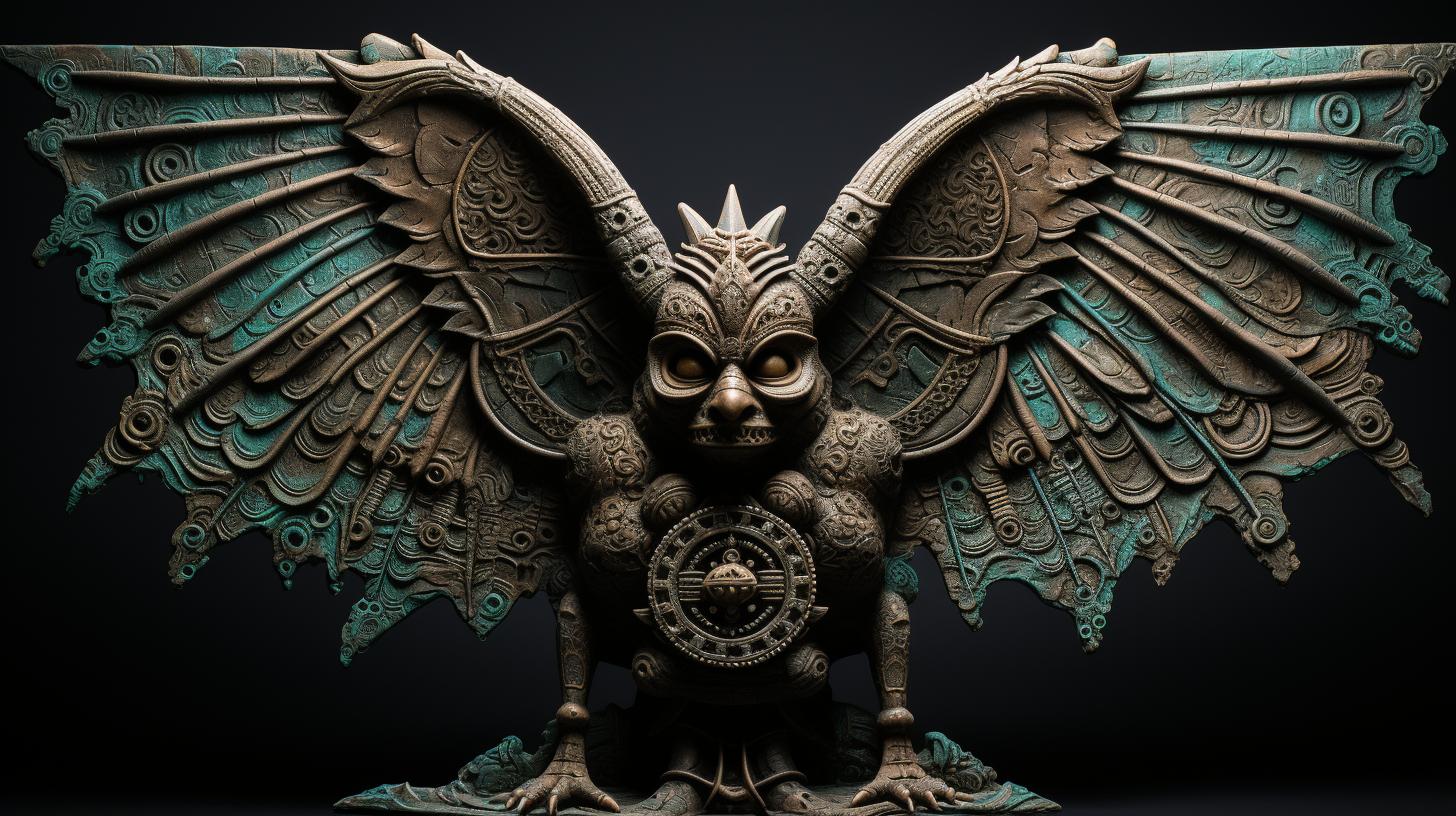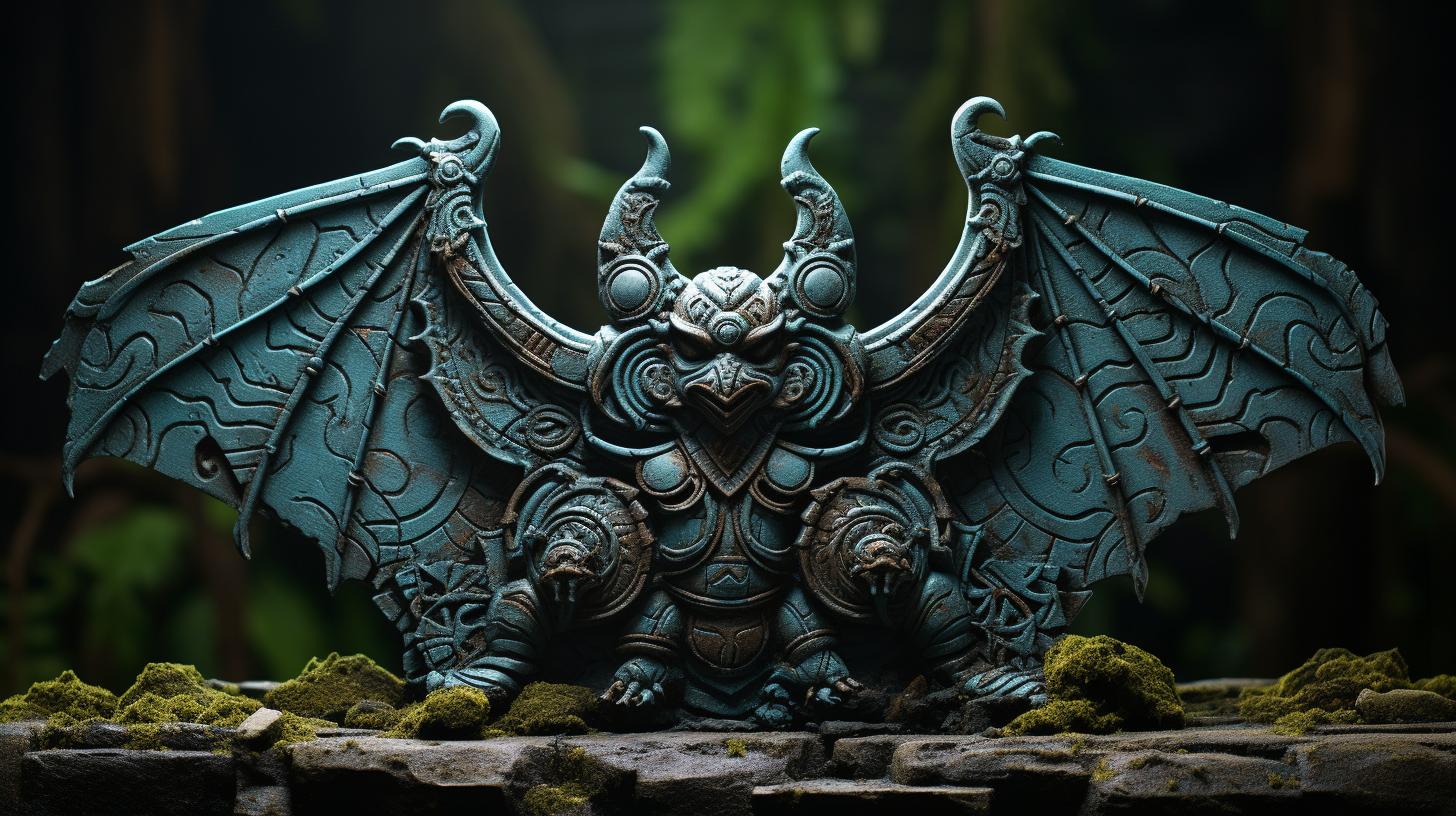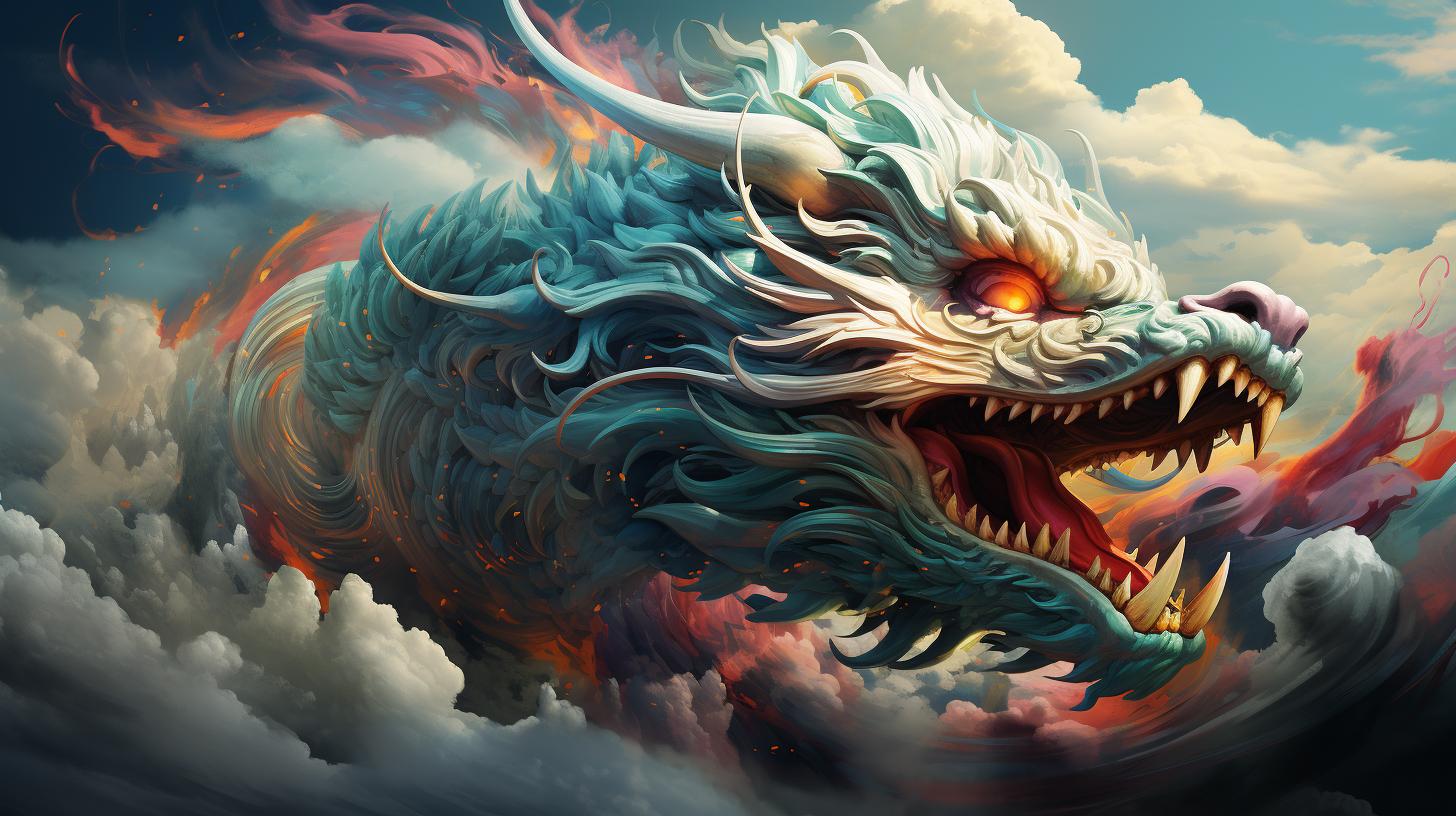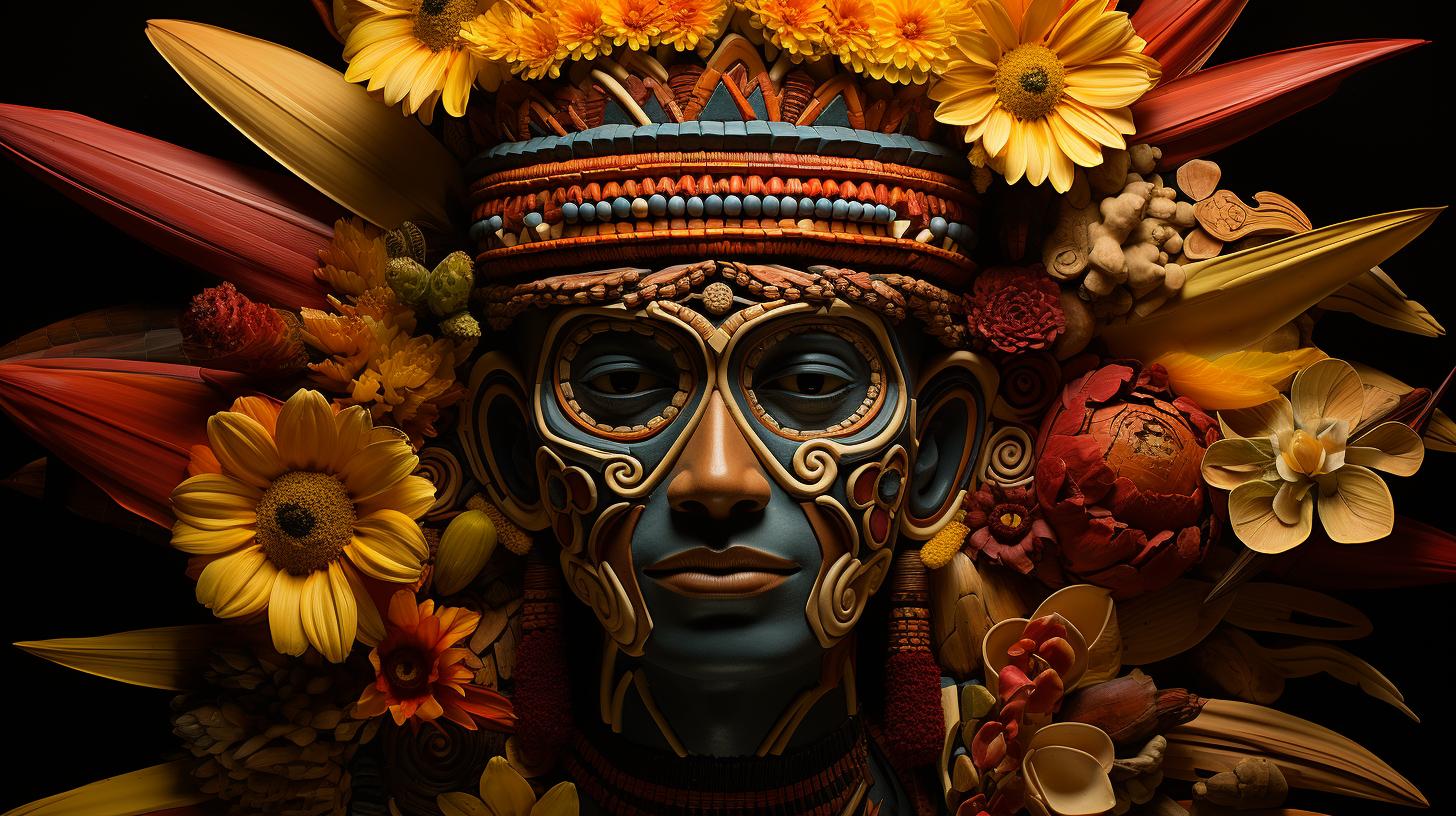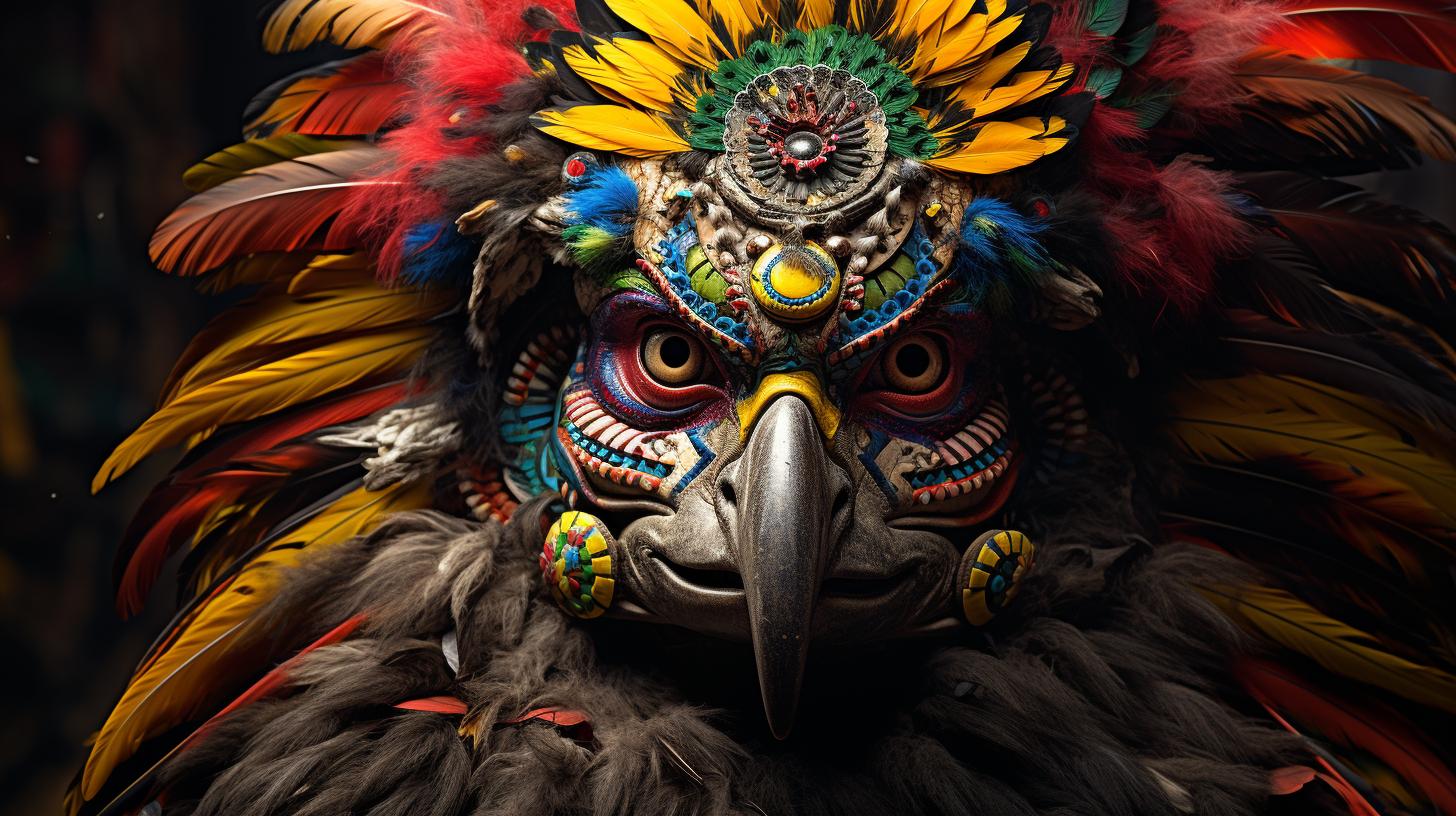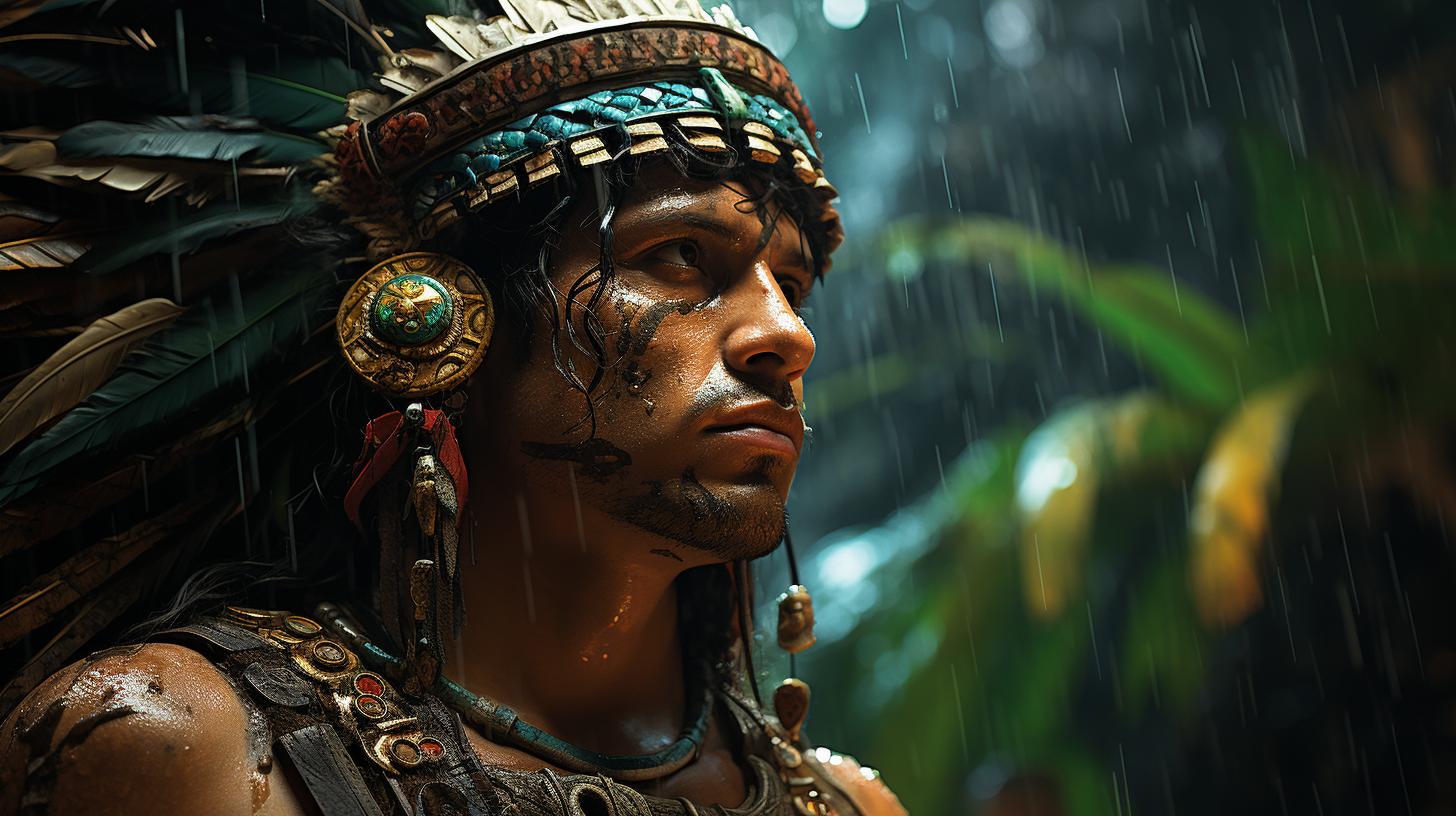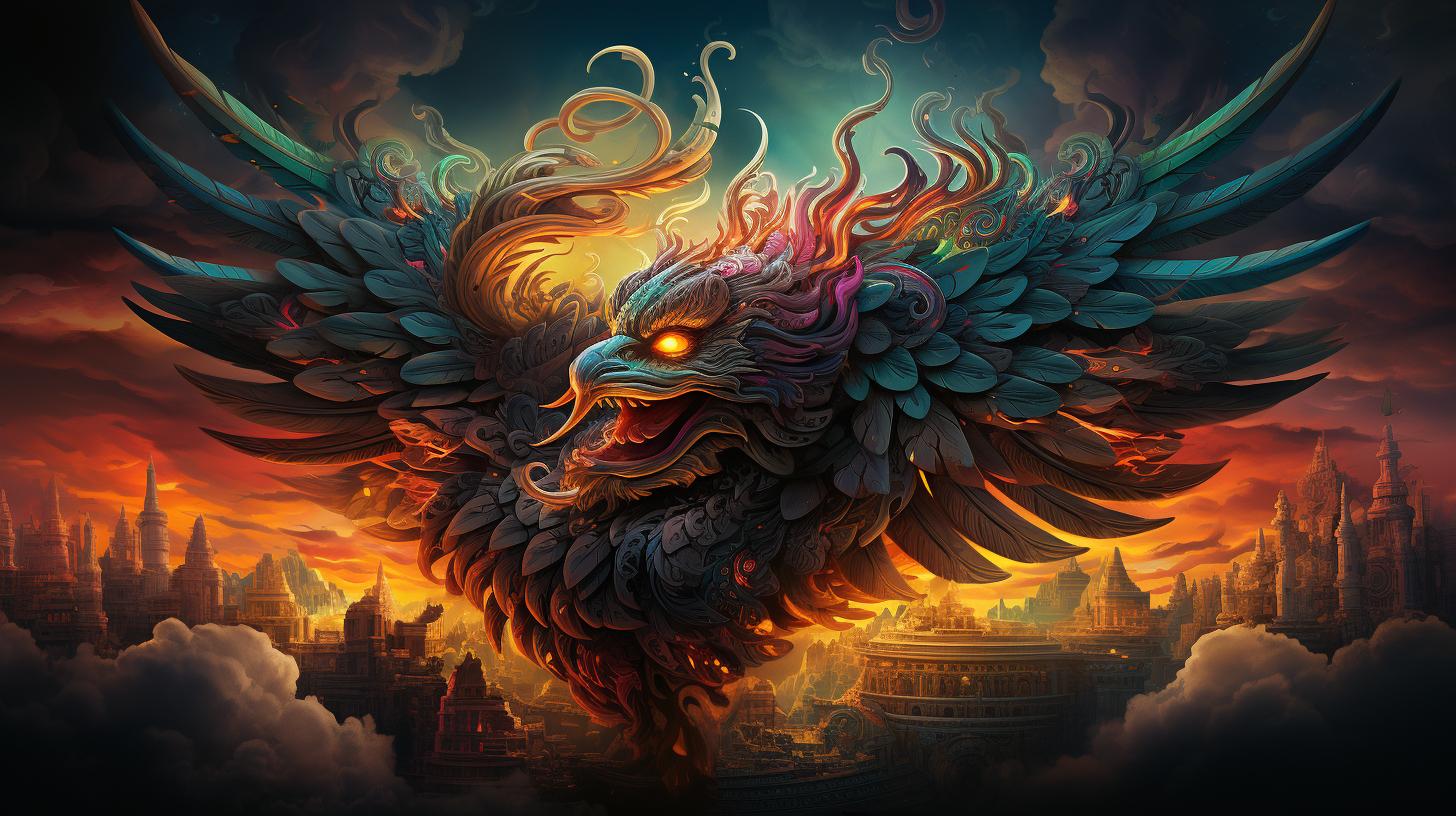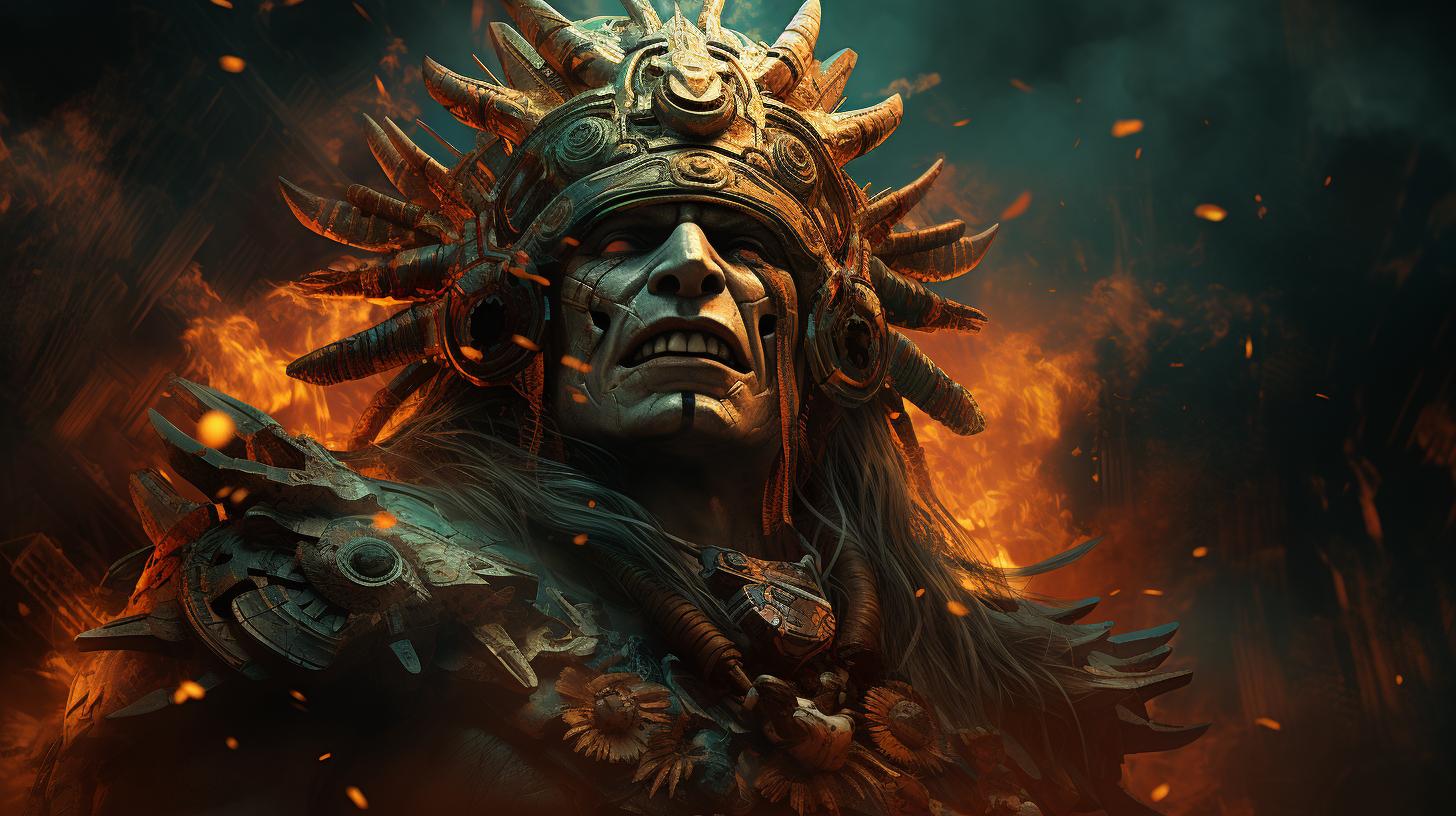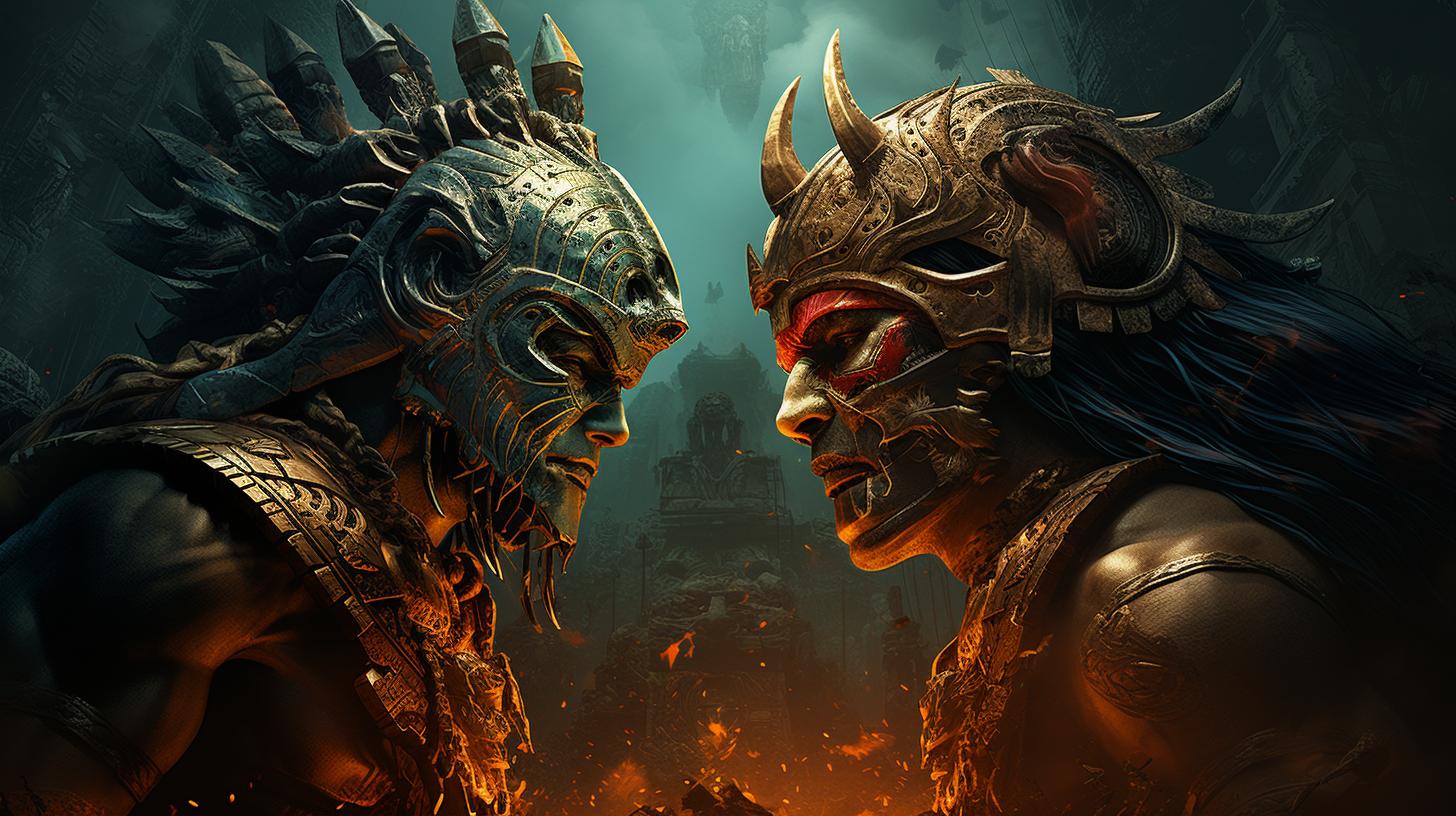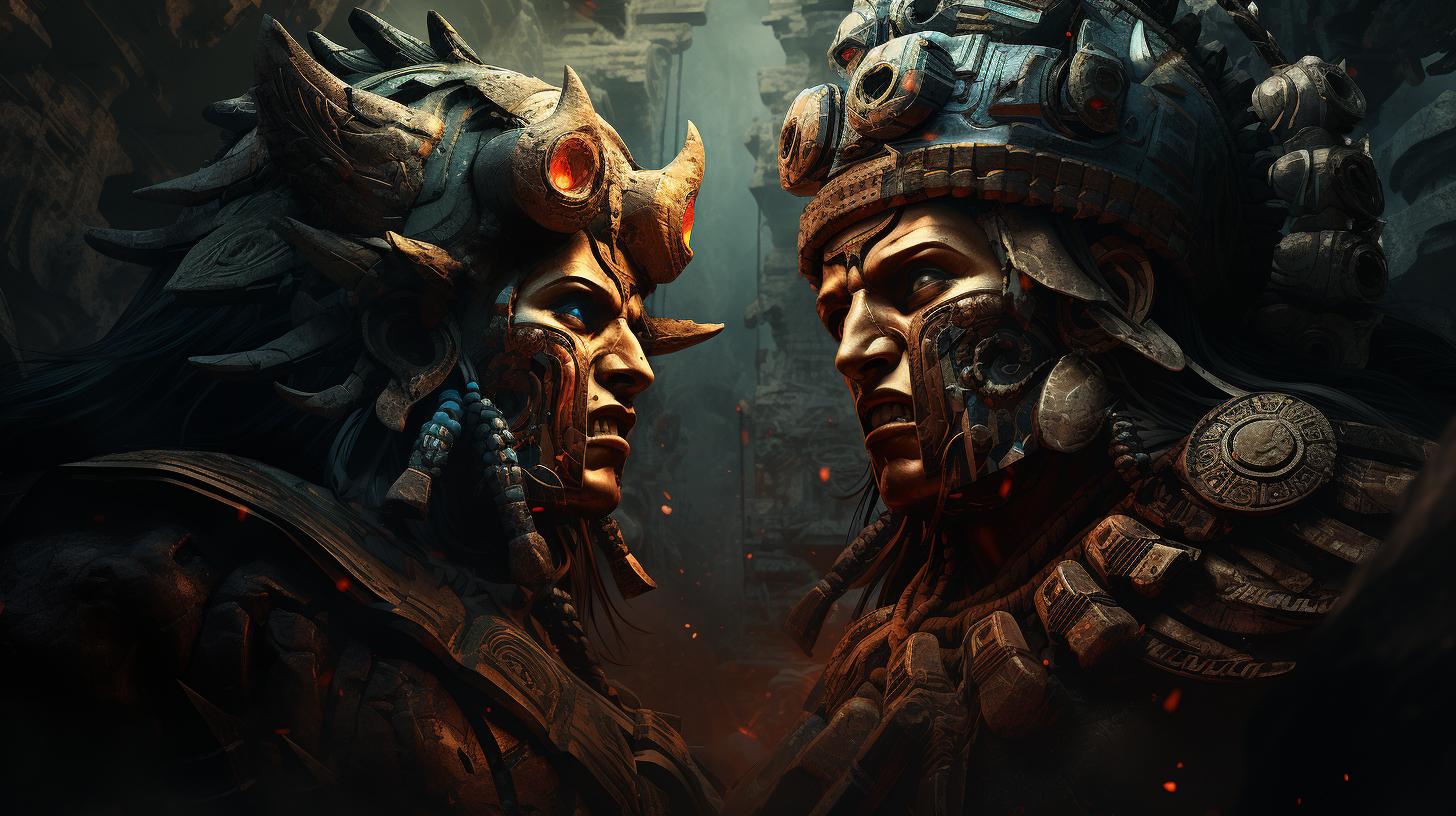Mayan God Camazotz: The Deity of Death and Sacrifice in Ancient Mayan Mythology
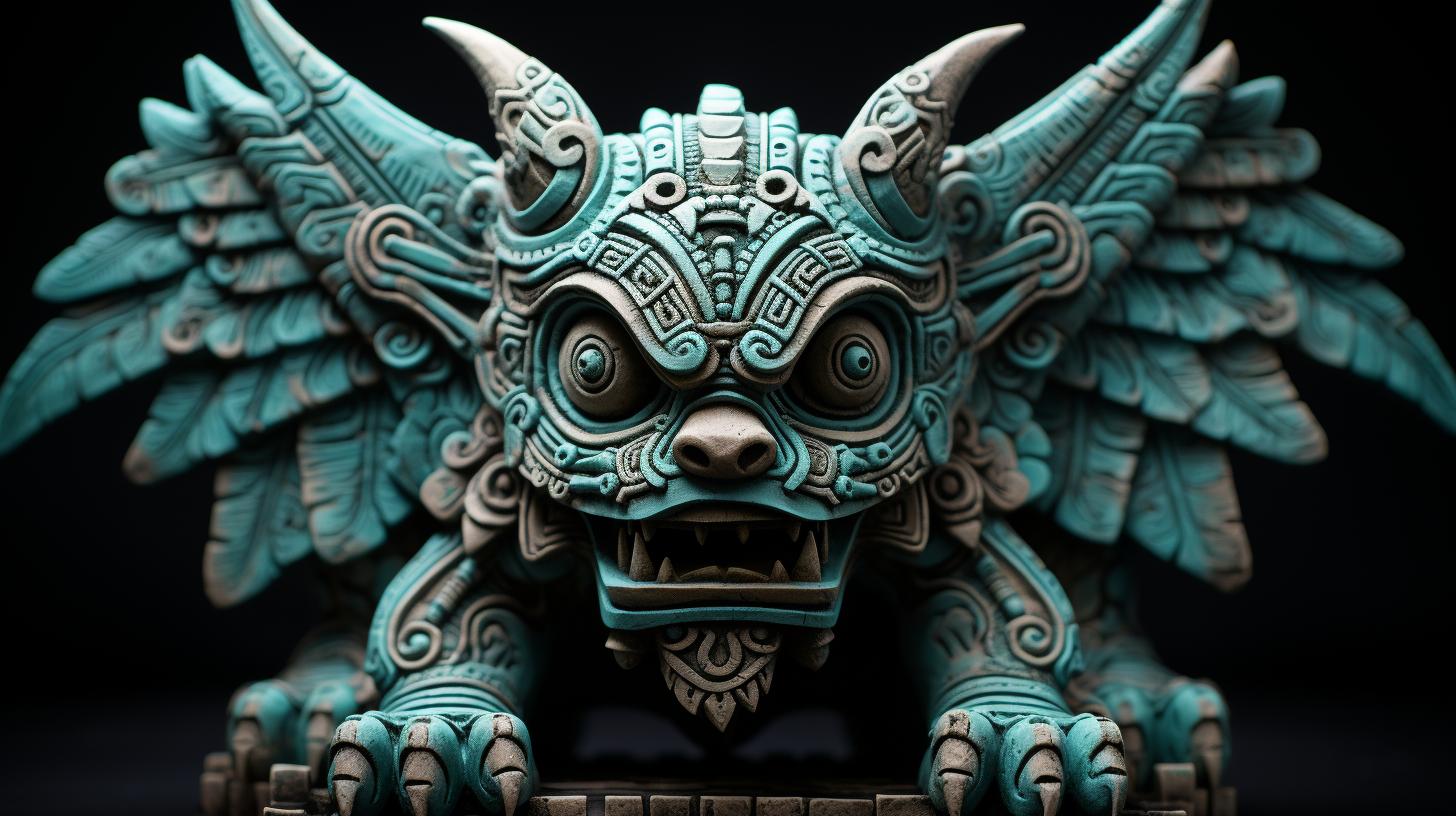
Camazotz, also revered as the Aztec Bat God and Mayan Bat God, embodies the formidable Mayan deity of death and sacrifice, significantly influencing ancient Mayan mythology. This god of bats, often associated with the underworld, served as an emblem of mystery and power, with bats being regarded as portals to this dark realm.
Illustrated wielding a sacrificial knife and a human heart, Camazotz executed his victims by beheading, demonstrating his ruthless nature. This article aims to explore the origins, art, and symbolism of one of Mesoamerica’s most fascinating deities, highlighting the rich Camazotz mythology that surrounds this figure.
The Origin of Camazotz in Maya Mythology
The ancient Maya civilization, thriving in the Mesoamerican region from 2000 BC to 1500 AD, had a complex religious system encompassing a vast pantheon of gods and goddesses. Among these, Camazotz, also known as Camozotz or the Camazotz Bat God, held a place of prominence, revered for his profound connections to the natural and supernatural worlds.
The Role of Bats in Maya Mythology
In Maya society, bats were celebrated for their unique qualities, particularly their role as mediators between the earthly realm and the underworld. The Maya esteemed bats for their connection with death and rebirth, their nocturnal behavior symbolizing darkness, mystery, and the enigmatic.
The link between bats and Camazotz was profound, with the god drawing inspiration from the vampire bats prevalent in the Oaxaca region of Mexico around 100 AD.
This veneration of bats as liaisons with the underworld culminated in the conception of Camazotz as a formidable and awe-inspiring deity, capable of navigating the realms of the living and the dead.
The meaning of Camazotz—often interpreted as ‘death bat’—highlights his terrifying prowess and his significant role in Mayan and Aztec mythologies.
The Legend of Camazotz in Classic Maya Mythology
In the heart of classic Maya mythology lies the legend of Camazotz, a being that dwelled within the labyrinthine caves of Xibalba, the feared Maya underworld. Known as the “death bat,” Camazotz’s story is a riveting tale that intertwines with the adventures of Maya heroes who dared to confront him.
His depiction as a creature of the night, reigning over his domain with an iron will, encapsulates the intrigue and terror that Camazotz inspired among the Maya people. As the god of bats, Camazotz symbolizes the profound and often unsettling connection between the natural world and the mystical, inviting us to explore the rich tapestry of Mesoamerican beliefs and legends.
According to the legend, the god would fly out of the caves at night and attack those who dared to venture too close to his domain.
Despite his fearsome reputation, Camazotz, the deity synonymous with night, death, and the underworld, was also associated with sacrifice and offerings to the gods.
Mayan priests would often perform ceremonies involving human sacrifice in honor of Camazotz, believing that these offerings would appease the god—Camazotz means death in a symbolic sense—and allow him to bring blessings to the people.
The ancient Maya worshipped Camazotz as a powerful deity, and his representation in art and religion played a key role in their culture, particularly in stories such as the Popol Vuh where Camazotz encounters the Maya hero twins in the underworld of Xibalba.
2.1 The Iconography of Camazotz
The iconography of Camazotz in Maya art was heavily inspired by bats, which were considered sacred animals among the ancient Mesoamerican cultures. The bat was an important symbol of the underworld (Xibalba), and its nocturnal habits, association with darkness, and ability to fly, all contributed to its mythological significance.
Camazotz, associated with night, epitomized these characteristics, embodying the essence of night death and the supernatural.
Camazotz was often depicted with exaggerated bat-like features, such as furry or leathery wings, pointed ears, and sharp fangs, indicating his power and status as a supernatural creature.
These depictions often portrayed Camazotz the giant bat god, looming over his devotees with a menacing presence, like creatures of the night personified.
The Worship of Camazotz in Maya Culture
The worship of Camazotz in Maya culture was an important part of their religious practices. The ancient Maya believed that by making blood sacrifices to the gods, they could ensure the continuation of life and the fertility of the land.
Camazotz, with his penchant for taking lives and shedding blood, became an important figure in their religious pantheon. The worship of Camazotz was conducted by the priests who made offerings of food, incense, and blood, usually from animals but sometimes from humans, to appease the god.
- Camazotz played a significant role in their rituals and ceremonies.
- Maya kings who claimed to be descended from Camazotz saw themselves as powerful and invincible.
- The cult of Camazotz eventually became widespread throughout the ancient Maya civilization, with his influence felt across different regions and time periods.
The Symbolism of Camazotz in Maya Culture
Camazotz’s depiction as a bat symbolized the connection between the underworld and the mortal realm.
The Mayas believed that the bats’ nocturnal activity allowed them to see what was hidden from others, including the world of the gods.
The ability to fly and navigate through darkness also represented their ability to transcend physical limitations and access hidden knowledge.
Camazotz’s association with death and sacrifice is a reflection of the importance of blood and violence in Maya life, closely intertwining with night death and the cycle of life and rebirth.
The Connection between Camazotz and the Underworld
Camazotz’s depiction as a bat, specifically the leaf-nosed bat, may have served as a visual representation of the underworld (Xibalba) and the powerful gods that ruled it, including the underworld Camazotz himself.
The art and mythology often depicted Camazotz as a frightening and powerful figure, capable of great destruction and chaos. This bat-like deity, associated with the darkness and uncertainty of the underworld, mirrored the Maya’s reverence and fear towards the afterlife.
His association with bats, death, and sacrifice, and his connections to the underworld, reflect the complexities of Maya cosmology and their beliefs about the afterlife and the gods. The story of Hunahpu stuck his head out during the ball game in the underworld against the bat god Camazotz, as told in the Popol Vuh, exemplifies the intricate mythology surrounding this deity and his domain.
The Symbolism of Camazotz in Maya Culture
The bat was an emblematic symbol in Maya mythology, representing death, rebirth, and transformation. Camazotz, the bat god of the Maya, was considered one of the most significant deities due to his association with the underworld and sacrificial rituals.
This section explores the meaning behind Camazotz’s depiction as a bat and the connection between Camazotz and the underworld, further illuminated by the epic tales of the Maya hero twins in the Popol Vuh, where they encounter Camazotz in the dark depths of Xibalba, the underworld Camazotz reigns over, filled with challenges and perils, including the notorious ball court where significant battles were fought against bat-like creatures and other daunting entities.
The Meaning of Camazotz’s Depiction as a Bat
In the mythology of the Maya, the bat was a symbol of life and death, as bats reside in caves which were thought to be portals to the underworld. Camazotz’s association with the bat ultimately made him a symbol of death, sacrifice, and rebirth.
Camazotz, known as the Mayan god of death and the underworld, is often depicted as a bat, symbolizing his dominion over the night and his role as a bridge between the living and the dead.
This depiction underscores the Camazotz meaning—a powerful deity capable of traversing the boundaries of life and death, embodying the essence of both fear and reverence in Maya culture.
The Connection between Camazotz and the Underworld
In Maya belief, Camazotz’s intimate association with the underworld was manifested through various rituals and offerings, designed to appease this deity.
Human sacrifice, a grim but significant practice, was perceived as a vital offering to Camazotz, the god of death, ensuring the deity’s favor and maintaining cosmic balance. This practice reflects the profound view history held regarding the cycle of life and death.
Additionally, the bat’s association with water, considered another portal to the underworld, deepened Camazotz’s connection to this realm. Such associations further solidified his significance in Maya culture, illustrating the intricate web of beliefs surrounding life, death, and the afterlife.
Camazotz’s ties to the underworld and his symbolic representation as a bat made him one of the most revered deities in Maya mythology. Through human sacrifice and ritual offerings, the Maya sought to ensure balance in the natural world, invoking Camazotz’s power to oversee the continuity of life and death, and maintain harmony within the cosmos.
Their story, a testament to courage, cleverness, and the quest for justice, highlights the complex relationships between the gods and humanity, and the underlying themes of creation, destruction, and rebirth that pervade Maya mythology.
The Myth of the Hero Twins and Camazotz
In the Popol Vuh, the sacred book of the Maya that chronicles the adventures of the Hero Twins, Hunahpu and Xbalanque, these characters play pivotal roles in shaping the world, vanquishing forces of evil, and mastering death itself.
Their father, the maize god Hun Hunahpu, was slain by the deities of Xibalba, setting the stage for a tale of redemption and the triumph of life over death, in which Camazotz plays a crucial role.
The Role of Hunahpu and Xbalanque in Maya Mythology
The Hero Twins were born specifically to avenge their father and defeat the gods of Xibalba. In their journey, they underwent a series of trials and tribulations that tested their intelligence, strength, and courage.
Ultimately, they emerged victorious, vanquishing the gods of Xibalba and restoring order to the world.
The Encounter with Camazotz in the Popol Vuh
One of the most famous episodes in the story of the Hero Twins involves their encounter with Camazotz. According to the Popol Vuh, the sacred book of the Quiché Maya, Hunahpu and Xbalanque descended into the underworld in search of their father’s remains.
While there, they encountered Camazotz, who was perched atop a tree, waiting to attack. The Hero Twins managed to outsmart the bat god by tricking him into showing off his powerful wings and then cutting them off, rendering him helpless.
They later used the bat god’s wings to transform themselves into birds, enabling them to fly out of the underworld and return to the world above.
The Symbolism of the Encounter
- The encounter with Camazotz represents the central theme of the story of the Hero Twins, which is the triumph of good over evil.
- The bat god is symbolic of death and sacrifice, and his defeat represents the ability of the Hero Twins to overcome death and emerge victorious from their trials in the underworld.
- The use of Camazotz’s wings to transform themselves into birds represents the power of transformation and the ability to overcome adversity through creativity and resourcefulness.
Camazotz in Modern Culture
The Legacy of Camazotz in Contemporary Society
Camazotz, the Mayan god of death and sacrifice, has left a lasting legacy in contemporary society.
One example of this is the use of his name in popular culture. Camazotz has appeared as a character in various video games, comics, and movies, including the game Tomb Raider and the film Apocalypto.
Moreover, his image has been used in music and album covers by various artists. Another way Camazotz has impacted modern society is through his representation in art. Many contemporary artists have been inspired by Camazotz’s dark and powerful image, giving him a new life through their works.
His image has been interpreted and reinterpreted through various mediums, including paintings, sculptures, and multimedia installations.
The Influence of Camazotz in Mesoamerican Mythology
Beyond the impact on popular culture, Camazotz’s influence can be seen throughout Mesoamerican mythology. His image and mythology continue to play a significant role in the beliefs and practices of modern-day indigenous communities in Mexico and Central America.
Moreover, scholars and researchers continue to explore and analyze the significance of Camazotz in ancient Mayan culture, shedding light on his complex symbolism and connection to the cosmos. Camazotz also represents the transformative power of myth and storytelling, reminding us that the past still resonates in the present.
By exploring the legacy and influence of Camazotz in modern culture and Mesoamerican mythology, we can gain a deeper understanding of the human experience and the enduring power of ancient myths.

